Download User Manual
Transcript
Version 2.0 2012 TM ✓ Digital Data Transmission for cleaner, sharper images over longer distances ✓ Privacy Pairing Function for private video transmission, helping comply with the Data Protection Act ✓ Reverse IR Transmission sends IR signals from receiver to transmitter for remote control of equipment ✓ Handshake Routine 2 way reporting for maximum security ✓ Whisper Mode listens for data at a low power for energy efficiency Digital, Reliable Transmission, up to 1Km!* Typical Installation *Additional antennas required for 1km More info at: www.videoMitter.com TM Things the professionals know! Tip - different sites will affect the range. 1. The signal will not go through hills. The density of the hill and water it contains in the soil absorbs the microwave signal. 2. The signal will go through branches of trees but remember that microwave signals will be attenuated greatly by water. Leaves and plants are full of water so the distance is reduced. To help, fit the best directional antennas and/or avoid the trees. Foil backed plasterboard Rain or snow Directional antenna blocks out the interference Router or other RF equipment 2 3. In modern buildings sometimes the structure is lined with “FOIL”. This can reflect or “ground” the wireless signal. Avoid transmitting through such “shields”. If wiring is not an option then use the powerful directional antennas to help or mount the Rx unit on the exterior of a building in an ABS box. 4. Remember if you are installing on a day when the weather is good the signal will be good. However, when it is raining heavily the microwave signal will be absorbed by the rain and reduce the distance. So always keep the distance to a minimum and allow for the use of additional directional antennas. 5. On some sites you may have other RF equipment that can interfere with the VideoMitters and reduce the range or cause poor performance. The best solution for a site like this is fitting directional antennas as they help “block” out the interference. TM Things the professionals know! Tip - getting maximum performance when fitting multiple pairs of VideoMitters on the same site. When you are fitting multiple pairs of VideoMitters on the same site, it's really important to have some knowledge of good installation practice of wireless devices. When you are installing any transmission device, it's always good practice to keep it a reasonable distance away from another transmission devices. This is because the signal from one could overwhelm the other leading to poor performance of one or both devices. Poor performance may result in intermittent loss of signal or non operation. The VideoMitters are actually “transceivers” this means that the “transmitters” and the “receivers” BOTH transmit and means you also need to keep pairs of receivers a reasonable distance from each other. 1-2 mtr Two transmitters close together with omni directional antennas, the signal from each can overwhelm each other. Try keeping them at least 1-2 metres apart. The standard antenna that the VideoMitters are supplied with is called an “Omni-directional” antenna, this means it transmits in “all” directions. So when two transmitters are close to each other they will be transmitting signals at each other as well as the receiver which is why you need to keep them spaced apart, spacing of 1-2 metres is required between each transmitting device. Professional installers of wireless equipment would always use “directional” antennas so that one transmitter is aiming its signal directly at its own receiver and therefore the signal is far less likely to interfere with another transmitter located near it. So on sites with multiple pairs of video transmitters, it is always recommended to use directional antennas for a professional installation. Adding directional antennas means the transmitters next to each other don’t overwhelm each other with erroneous transmission. The added benefit of the directional antennas is that they will also add increased range making the whole system more reliable. Tip The VideoMitter has 20 channels so theoretically 20 pairs can be used per site however it is only recommended to use 4 pairs per site to minimise any chance of cross interference. Using directional antennas means the VideoMitters can be fitted closer together. 3 TM Read these instructions before using the MIT100 and MIT150 as they contain vital information... Connections - TX/RX Although identical in appearance each unit is clearly marked on the face as: TX - Transmitter Connecting the Video & Audio 1 2 3 4 5 Connect the video input feed to the yellow video phono socket (3) on the Transmitter. RX - Receiver Both units have the following connections 1 - Audio Right via a phono socket 2 - Audio Left via a phono socket 3 - Video connection via a phono socket 4 - Infra Red socket 5 - 12v D.C. power connection via a spring loaded terminal strip Connect the video output feed to the yellow video phono socket (3) on the Receiver. If using audio, use the red (1) and white (2) phono inputs and connect to the audio R and L for stereo or L only for mono. A video/audio lead with phono connections at both ends is supplied. You may need to fit the CON003 Phono to BNC converter to the yellow phono connector if the video input feed has a BNC connection. The video/audio lead supplied is 180cm long. If you need to use an alternative lead, remember that both video and audio signals require both a signal AND a ground connection to complete the circuit. Converts a Phono Plug into a BNC Plug 1 2 3 4 5 6- Antenna Connection (RP SMA Female Socket) connects to extension cables or direct connection antenna models. 4 WARNING POLARITY SENSITIVE 6 CON003 Powering the Units Both the transmitter and receiver need a power supply unit (PSU). The PSU for the receiver needs to be capable of supplying 12V D.C. @ 150mA continuously. The transmitter needs a PSU capable of supplying 12V D.C. @ 200mA continuously. Please keep this in mind if you are intending to share a PSU for both the TX unit and your chosen CCTV camera. When choosing any PSU for CCTV equipment ensure that it is fully regulated or you risk damaging the CCTV equipment. A good quality supply such as the “AntiHum” series featured on page 14 is ideal. TM The spring loaded terminal strip (5) that connects power to the units is clearly marked with the correct connection polarity. + - 12 V May also be a red core. 12V DC 5 WARNING POLARITY SENSITIVE 0V Figure 1 If you are using an “AntiHum.com” PSU and have cut off the D.C power plug you will be left with a two-cored cable. The black core with the white strip is +12V; the solid black core is 0V (figure 1). Take extreme care here as the TX is polarity sensitive and must be correctly connected by pressing the orange spring clips (5) in with a small screwdriver and placing the power cable into the respective hole below, ensuring positive and negative cables are connected according to the diagrams shown. If you are using any other PSU, you MUST check the polarity of the power supply that you are using to ensure the power is connected correctly. Always check this with the actual PSU instructions! Receiver end and it is necessary to ensure that the BLACK IR connection cable is fitted to the RECEIVER and the ORANGE connector is fitted to the TRANSMITTER. IR Receiver connection from TX unit If you want to use the Infra Red receiver option ensure that the IR connection cable with the ORANGE connector is fitted to the TRANSMITTER IR socket (4). TX ORANGE Note - The IR from the orange lead only transmits a short distance to the device its being used to control, therefore please place the end of this lead within 0.5 mtrs of the IR input. IR input connection to RX unit If you want to use the Infra Red transmit option ensure that the IR connection cable with the BLACK connector is fitted to the RECEIVER IR socket (4). RX BLACK Infra Red Transmissions Infra Red transmission is also available on the VideoMitter. This provides additional functionality such as remote control of your DVR, other IR controlled CCTV equipment (or even your Sky+ box). The Infra Red transmission however is controlled from the VideoMitter 5 TM Pairing Receiver with Transmitter For security purposes and to ensure that transmissions are only shared by the receiver connected, the transmitter is paired with the receiver. This is done automatically by randomly setting the same ID in both units from an extensive ID range. Note that when purchasing a transmitter and receiver they are already paired and it is unlikely that you will need to rerun the pairing process. However if one of the units is replaced or taken to another site, it will be necessary to do this. This is a simple process that will take only a few minutes. Figure 2 Checking if the units are paired 1. Set the units up at least 2 feet apart. 2. Connect a 12v DC regulated power supply to the Transmitter ensuring the polarity is correctly set. If you depress the orange spring clip with a screwdriver, you can then push the respective positive or negative cable into the hole below the clip. The red power led will light, then extinguish. 3. Connect a 12v DC regulated power supply to the Receiver, ensuring that the polarity is correctly set. If you depress the orange spring clip with a screwdriver, you can then push the respective positive or negative cable into the hole below the clip. The red power led will light, then extinguish. 4. After 4 seconds, on both units, the power LEDs will light permanently if the units are paired. (figure 2) 5. If the power LEDs are not lit then the units are not paired, then follow the instructions on the next page. 6 TM 5 How to Pair Units 1 First ensure that a monitor is connected to the RX Receiver and a video feed to the TX Transmitter. Press the RECEIVER pair matching button down until the led starts flashing and then release it. The monitor will then start pairing to the transmitter and the led on the transmitter will extinguish. 2 A countdown on the monitor then gives you one minute to press the pairing button on the TRANSMITTER. Hold the button down again until the led starts flashing. 3 When pairing is complete the monitor will display PAIRING OK / SAVE DATA 4 When the transmitter and receiver are successfully paired the monitor will display the camera picture and in the top right hand corner of the display screen a signal strength bar will show up to 5 bars. Please press pairing button of TX device In the event that no signal is displayed after the pairing process, this means that the transmitter and receiver have failed to pair within the countdown period. Return to step 1. 6 If no video signal is displayed, check that a video source is connected to the transmitter. Return to step 1. NO SIGNAL NO VIDEO SIGNAL 59 ✓ If both Transmitter and Receiver power LEDs are lit permanently, the units are paired. Pairing OK Save Data If the LEDs are not both lit, then start the pairing procedure again. If you press only one pairing button on units that are already paired, you do not lose the pairing. After one minute it will be paired with its original unit. Only one Transmitter and one Receiver The pairing process effectively works with only one transmitter and one NO SIGNAL receiver. It will not allow two or more receivers to pair with the same transmitters. If this is attempted, the following is displayed on the monitor connected to the receiver that is not paired. Note that the pairing process pairs the transmitter and receiver for security purposes, so that only the data transmitted is seen by the paired receiver. It does not determine the channel used. 7 TM Installation Procedure The transmitter and receiver will give the best results if there is line of sight between them. Obstructions will affect transmissions if the digital signal is corrupted, but provided the receiver sees the digital signal you will always get excellent quality results similar to the picture quality generated by the camera. With digital, it will always be a good picture or nothing. It is therefore advisable to mount the transmitter and receiver at an adequate height to avoid vehicles and people. If using several transmitters in the same location try to keep them 1 metre or more apart. Also it is good practice to fit directional antennas where multiple pairs are used. This also applies to the “receivers” try and also keep them 1 metre apart. The units have wall mount fixing lugs for internal installation but for external applications, they must be installed in a suitable IP rated plastic enclosure. Do not use metal enclosures. If fitting the Transmitter or Receiver in an enclosure it is not necessary to make a hole in the plastic enclosure if it is large enough to house the complete unit including the antenna. If not, it is not recommended to have the antenna protruding from a hole in the top of the enclosure unless a watertight seal can be made between the antenna and box. It is therefore recommended to mount the unit so that any hole cut for the antenna is made in the base of the enclosure and a good silicon seal made to protect from water/moisture (figure 3). Our Recommended System Design... figure 3. In some instances where you can not achieve a clear line of sight, you may need to fit a more powerful antenna than those supplied free with the kit. A range of both internal and external models are available and shown later in this manual. Whilst different models are available to suit different installations, please note the same model of antenna must be fitted at both TX & RX ends. Once connected, the RX unit will overlay a signal strength bar on the transmitted picture. This is a useful indicator if you will be inputting the transmitted signal to a device other than a monitor as whilst a monitor will display a signal strength as low as 0.7V p-p, devices such as DVRs, quads and switchers require a stronger signal of 1V p-p to display an image. What is line of sight? This is when the TX and RX can “see” each other with no obstacles inbetween them. The TX is mounted in an external weatherproof box and only has to send its signal “line of sight” through air. There is little to attenuate the signal and good results should be achieved. The external antenna in the receiver helps “pull-in” the signal from the transmitter. 8 TM The diagram below shows how three sets of VideoMitters can provide a wirefree connection to another piece of equipment. It is recommended up to 4 pairs per site can be utilised providing superior digital image quality from that of analogue transmission equipment. Whilst transmission distances can be affected due to the building construction, extra video gain can be produced using an improved antenna detailed later in these instructions. As previously stated ensure the groups of receivers and the groups of transmitters are installed at least 1 metre apart. This also means that you must not put either device in a metallic CCTV housing. Mount the units at a reasonable height. If you mount both units at over 2.5 metres indoors, people walking around will not get in the line of sight of the two units and attenuate the signal. Similarly when using the units externally, mount them above the height of any passing cars and lorries, which could drastically attenuate the signal. Note that metal objects can completely screen a wireless signal, so avoid metal gates and do not install in a metal cage such as a lorry or lift, unless you are able to position an extension antenna on the outside. Also be aware that the closer an obstacle to the transmitter, the weaker the signal will be. Therefore it is not advisable to place the transmitter directly behind a wall. Whilst the VideoMitter may work indoors through walls and office constructions, there are no easy ways of confirming this, so use the signal strength bar and attach a pair of antenna to improve transmission quality if necessary. Ensure that if fitting multiple transmitters and receivers, that the transmitters are more than 1m apart. General Information Installation Tips When using the units externally, a line of sight will always achieve the best results. Line of sight means the units can visibly see each other without any obstructions. Remember whatever is in the way of the line of sight between the two units will attenuate the signal. A building, people, hills or a mound of earth for example will reduce the overall range at which a good picture quality is attainable. You can often get good or near lines of sight, by taking your power and video signals to the ends of facing buildings using cabling and then transmitting between the two buildings (rather than through them) using the TX & RX. If you are going to put the units in external enclosures make sure the enclosures are the plastic/ABS type, as these will allow the radiated signal to pass through them. Better still, put the transmitter and receiver in the box and put an external antenna outside the box. Whatever you do you must not put the receiving or transmitting antenna in a metallic box as this will adversely affect the products and their performance. The VideoMitter transmitter and receiver are a new generation of digital equipment, that convert an analogue signal to digital format and transmit it to the receiver wirelessly, where the receiver decodes the video back into an analogue output. The analogue output can then be taken to the DVR or monitor. The advantage of using digital is that you get 100% interference free video quality. As digital signals are binary codes of 1’s and 0’s, providing the video signal can be detected, you should be able to get a high quality, interference free video signal. These transmitters work over the 2.4Ghz band and are paired to a receiver to provide security and signal quality. The pairing selects a random ID code from an extensive ID range and is shared only by the transmitter and receiver pair. Therefore the wireless video signal cannot be received by any receiver other than its own. It should therefore only be necessary to rerun the pairing procedure if either the transmitter or receiver has to be replaced. 9 TM Unlike analogue transmitters, the VideoMitter has no dipswitches for selecting transmission bands in the 2.4GHz range. It uses an automatic channel hopping feature to select a clear usable channel and this channel may change frequently dependent on the traffic detected on the channel band. Therefore spurious use by other equipment e.g WiFi, will trigger the unit to search for another available channel seamlessly. The channel hopping facility also allows a number of paired VideoMitters to be installed at the same location. The total number of channels that can operate at one site is a maximum of 20. Note that this number is dependent on other traffic density so the number may be less. Always ensure that the transmitter and receiver have line of sight. Any obstacles will have an effect on the video signal. Line of sight means that there are no materials between the transmitter and receiver, only air. Placing units behind glass is not line of sight. Metal can completely block a transmission, whereas non-metallic obstacles will introduce a certain amount of signal attenuation. Providing this attenuation does not corrupt the digital transmission, the results should always be very good. Note that dense material close to the transmitter will have the greatest effect. Increasing signal gain can be accomplished by fitting an improved antenna. These are described in more detail, later in this instruction manual. Without line of sight, no guarantee can be given on transmission distance. Troubleshooting Q.1 I cannot pair the Transmitter and Receiver. I keep getting a “No Video Signal” displayed. A.1 If no video signal is displayed but the power LEDs are permanently lit on both the Transmitter and Receiver, the units are paired. The No Video Signal is displayed if the units are setup without a video input. Ensure a video or camera signal is connected to the TX input. Q.2 The monitor is displaying a static picture. A.2 The video stream is no longer being transmitted. Check that the power led on the Transmitter is permanently lit. If not check the power supply is delivering 12vDC. 10 Q.3 I am getting No Video Signal or the video stream is very slow. A.3 If the distance is within range but you do not have line of sight, then the problem may be due to obstacles screening the video signal. Metal is the main substance that can completely screen a wireless signal, therefore avoid completely metal constructions. Metal gates, plasterboard lined with aluminium sheeting, metal cages or vehicle cabs or lorries etc can also screen the video signal. As the VideoMitter pack will either provide good video quality or nothing at all, you can either move the equipment to provide line of sight, use an external antenna and extension lead that will allow line of sight or you can try a more powerful antenna. You will find that thick brick or stone wall constructions will reduce signal strength and the closer they are to the transmitter the greater their effect. Q. 4 When the Transmitter or Receiver is first connected to power, the power LED lights then extinguishes and then after 4 seconds after both units have been powered, they both show a permanent power LED light on. A.4 Although the LED is labelled as a power LED, it has two functions. The initial illumination tells you that the unit has detected power and when the power LED finally displays a permanent LED light on both units, it tells you that the units are paired and are able to transmit and receive. Q.5 In order to reduce costs, can one pair be used to transmit the output from a DVR that has 16 cameras connected to it? A.5 Yes this will transmit whatever the DVR is outputting. An added extra is that you can control the DVR from the Receiver end, where you can transmit IR codes from the IR remote control. This means IR codes for controlling a PTZ camera can be transmitted to a DVR which has a PTZ connected to it. Q.6 I cannot control my DVR using my IR remote Controller when using the VideoMitter units. A.6 Ensure that the Black IR lead is connected to the MIT150 RX unit and the Orange IR lead to the MIT100 TX. The IR transmission only works when the... continued > TM Troubleshooting ...continued IR Remote controller is aimed at the Black IR sensor. The Orange IR sensor must be connected to the MIT100 and directed at the front of the DVR where the IR sensor resides. Q.7 No power light on the Transmitter or Receiver. A.7 This could mean that there is no power to the Transmitter or Receiver. They are not paired. Check that the power light comes on when power is applied. Check the same at the transmitter. Q.8 No power light on the Receiver but Transmitter power light is on. A.8 If using multiple transmitters and receivers at a site, ensure that the receivers are at least 1m apart. Q.9 The customer has reported that the picture from the MITKIT appears to have frozen like it has locked up, what is wrong? A.9 It is because the receiver and transmitter can not connect to each other this can be caused by one or more of the following combinations. The cure is nearly always good line of sight AND directional antennas. Main causes of freezing or lock up A- The distance between the two is too far, site conditions will reduce range, see page 2. To help remedy this you need to bring them closer together and/or use directional antenna, or B - There are multiple pairs of MITKIT on the same site and they are interfering with each other, to remedy this move adjacent TX units & adjacent RX units to be at least 1m apart and also use directional antennas, or C - There are other transmission devices on the site, again the use of direction antennas will help. SYMPTOM POWER LIGHTS OFF Not Paired No Video Signal ON No Video at TX ON Poor Signal Strength No Video Signal Slow or Static Image Static Image Static Image REASON TX LED OFF RX too close to RX LED ON another RX. Keep 1 Unit not pairing metre apart TX LED ON TX too close to RX LED OFF another TX. Keep 1 Unit Not Pairing metre apart. Tip Remember, different sites will produce different results. Microwave signals are reflected by metallic objects and also absorbed by water, that’s how microwave ovens work, they heat the water in the food to make it hot and the metal casing of the oven keeps the microwave signal inside! This means anything on a site that contains water can reduce the signal and transmission distance, similarly metal can reflect or block the signal. Where the signal has been reduced and the VideoMitters performance affected you will need to use additional antennas to help “boost” the range. Directional antennas always work best. To solve installation problems you need to read these instructions from cover to cover and apply the advice contained within them. Q.10 I can’t get the IR control to work. A.10 The IR from the orange lead only transmits a short distance to the device its being used to control, therefore please place the end of this lead within 0.5 mtrs of the IR input. 11 TM Line of sight* distance achievable with optional antennas AER505 Antenna connection cable AER505 External Use AER510 AER510 External Use AER537 AER537 Internal Use AER535 Internal Use AER535 AER530 AER530 External Use as supplied Professional 12V Terminal Connection Replacement Antennas The antennas that are supplied with the transceivers are specified to work up to 200 metres with line of sight. If you need to extend this range up to 1km, or if you do not have 12 Available models for both internal & external applications. *Line of sight means no physical obstacles and the antennas can actually see each other. line of sight, then you can try a set of antennas from our omni-directional or semi-directional antenna range. The next pages show antennas available for both internal and external use as well as other appropriate accessories. TM Medium Gain Omni-Directional Antenna Tip You will need a connection cable (as below) in order to connect these optional antennas to the VideoMitter. code:AER530 Specification This antenna allows the TX & RX to be enclosed in a small external enclosure with this antenna mounted on top of the box for a professional look. ✓ ✓ ✓ ✓ Fit to the Tx and Rx IP65 Rating Up to 300mts Range Female N Connector IP65 Rating - Indoor or Outdoor Connector N Female Gain 6 dB (Max unobstructed 300m) Vertical beam - 25 degrees Horizontal Beam - Omni-Directional Polarisation - Vertical Impedance 50 Ohms Frequency 2400-2480Mhz Size - 330mm long (max) ORDER CODE AER530 Requires lead below for connection High Gain Semi-Directional Flat Wall Mount Antenna Nice modern design that offers a beam spread of around 30° for good semi-directional performance and ease of mounting. ✓ ✓ ✓ ✓ ORDER CODE Fit to the Tx and Rx IP54 Rating Up to 750mts Range Female N Connector AER510 Requires lead below for connection code:AER510 Specification IP54 Rating - Indoor or Sheltered Outdoor Connector N Female Gain 14 dB (Max unobstructed TX 750m) Vertical beam - 30 degrees Horizontal Beam - 30 degrees Polarisation - Vertical Impedance 50 Ohms Frequency 2400-2500Mhz Size - 230 x 200 x 50mm Extra High Gain Semi-Directional Pole Mount Antenna Nice modern design that offers a beam spread of around 22° for good semidirectional performance and ease of mounting on a pole or mast. ✓ ✓ ✓ ✓ Fit to the Tx and Rx IP65 Rating Up to 1Km Range Female N Connector Can be mounted on a wall using mini pole kit. >>> Order code: AER500 ORDER CODE DESCRIPTION AER505 AER500 Antenna Pole Kit code:AER505 Specification IP65 Rating - Indoor or Outdoor Connector N Female Gain 18 dB (Max unobstructed TX 1Km) Vertical beam - 22 degrees Horizontal Beam - 22 degrees Polarisation - Vertical Impedance 50 Ohms Frequency 2400-2480Mhz Size - 330 x 330 x 65mm Requires lead below for connection Antenna Extension Cables RP SMA MALE Fit to the VideoMitter N MALE Fit to the antenna Extension cables to connect the Tx and Rx to the external antennas above. ✓ Fit to the Tx and Rx ✓ 4 Available Lengths ORDER CODE CON902 CON910 CON912 CON915 DESCRIPTION 0.2m Long 1m Long 2m Long 5m Long 13 TM Internal Semi-Directional Antenna - Direct Connection Specification IP54 Rating - Indoor or sheltered Outdoor Antenna - RP SMA Female Gain 14 dB (Max unobstructed TX 750m) Vertical beam - 30 degrees Horizontal Beam - 30 degrees Polarisation - Vertical Impedance 50 Ohms Frequency 2400-2500Mhz Size - 109.6(L) x 90.9(W) Connect antenna directly to unit. code:AER537 This antenna design offers a beam spread of around 30° for good semidirectional performance. ✓ ✓ ✓ ✓ Fit to the Tx and Rx IP54 Rating Up to 400mts Range RP SMA Female NO CABLE REQUIRED FITS DIRECT TO UNIT Internal Omni-Directional Antenna - Direct Connection Specification Connect antenna directly to unit. IP65 Rating - Indoor or Outdoor Antenna - RP SMA Female Gain 5 dB (Max unobstructed 300m) Vertical beam - 25 degrees Horizontal Beam - Omni-Directional Polarisation - Vertical Impedance 50 Ohms Frequency 2400-2480Mhz Size - 400mm(L) (unit not included) 12V Power Supply AER537 code:AER535 This antenna allows the TX & RX to be enclosed in a small external enclosure with this antenna mounted on top of the box for a professional look. ✓ Fit to the Tx and Rx ✓ IP65 Rating ✓ Up to 300mts Range ✓ RP SMA Female NO CABLE REQUIRED FITS DIRECT TO UNIT ORDER CODE AER535 Weatherproof Enclosure High quality low cost plug in PSU 500mA 12V DC, ideal to use with VideoMitters. ✓ Power the Tx and Rx ✓ Fully Regulated NB: MIT100 TX draws 200mA MIT150 RX draws 150mA ORDER CODE ORDER CODE POW150 Box enclosure with lugs for fitting the Tx and Rx externally, rated IP65 comes in ivory ABS build. (190 x 190 x 70mm) ✓ IP65 Rating ✓ Ivory ABS Build ORDER CODE BOX420 Spare Parts for Tx and Rx VideoMitters Video Lead Lost or misplaced a part from your VideoMitter Kit? 14 IR Tx Lead IR Rx Lead ORDER CODE DESCRIPTION MIT050 Video lead MIT052 IR Rx Lead MIT051 IR Tx Lead (Orange plug) Other products that may interest you TM VoiceOFF MK2 Now with RS232 Input triggers up to 9999 sounds!! plus 20 alarm inputs trigger 20 user recordable warnings! The new VoiceOff MK2 is an alarm activated voice or sound warning unit that has 20 separate alarm inputs to trigger up to 20 different sound recording files and with the new added feature of an RS232 input can trigger up to 9999 sounds!!! Alarm activations can be triggered from an internal or external PIR, break beam detectors, panic button, keyfob or from a DVR detecting video motion in a camera’s footage. CODE Voice warning messages can be downloaded or recorded yourself in a MP3 format onto a removable SD card stored in the VoiceOff unit and used to deter intruders or even welcome visitors. Similarly sound files such as a police siren or dog barking can be used to deter unwanted visitors in vulnerable areas. DESCRIPTION VOX200 VoiceOff Unit When used in conjunction with the alienDVR range, the VoiceOff can be activated remotely over the internet when a suspicious sighting has been made. Features ● ● ● ● ● ● ● ● Specification 20 x Alarm Inputs Speaker output 8W 80 ohms SD card compatible (supplied) MP3 file compatible 8-18V AC/ DC 12V DC 120mA Standby 200mA max (depending on volume) Wall Mounting Fixing Lugs Ivory ABS Housing, Rated IP65 Max Size: H234 x W188 x D85 (inc. gland/speaker) Accepts up to 20 alarm inputs Powerful 10 Watt Output Voice & sound files stored on a removable SD card Can be activated automatically using alarm inputs Can be used as a talkback amp with DVRs RS232 connection to PC or DVR Stores & plays 9999 sounds Voice & sound files available from www.voiceoff.com or scan the QR code >>> Use the VoiceOff for... Deterring vandals Welcome to Groves Garden Centre. Welcoming Visitors Warning off intruders Warning! Intruder detected, CCTV system recording. Hard hats must be worn in this area! Inform in risk areas 15 TM outperforms others Visit: www.VideoMitter.com Or scan the QR code with your phone to take you to the website! Technical Specification Model Operating Frequency Transmission Channels Operational Range Channel Hopping Transmission Options ID Pairing Power Current Drawn Power Supply Recommended Video Connections Audio Connections Infra Red Socket Antenna Connection Unit Size Overall MIT100 - TX MIT150 - RX 2.400GHz - 2.4835GHz 20 (recommended maximum 4 pairs per site) Up to 200 metres line of sight with antenna supplied FHSS employed to frequently switch channels Video - Audio (Stereo) - Infra Red TX and RX are paired with a random ID code 12v DC 200mA 150mA 12v DC 500mA regulated per unit Phono Input x 1 Phono Output x 1 Phono Inputs x 2 Phono Outputs x 2 Orange RX Lead Black TX Lead RP SMA Female 113mm x 95mm x 25mm WEE/CG0783SS This symbol on the products and/or accompanying documents means that used electronic equipment must not be mixed with general household waste. For treatment, recovery and recycling please return this unit to your trade supplier or local designated collection point as defined by your local council. Licence Exempt - EN300440 Short range digital data transmission using frequency hopping modulation. All specifications are approximate. VideoMitter.com reserves the right to change any product specifications or features without notice. Whilst every effort is made to ensure that these instructions are complete and accurate, VideoMitter.com cannot be held responsible in any way for any losses, no matter how they arise, from errors or omissions in these instructions, or the performance or non-performance of the equipment that these instructions refer to. 16
















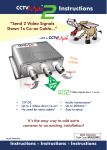

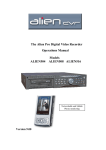



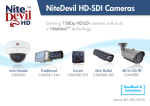
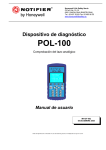


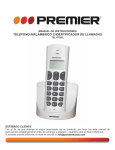
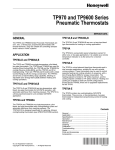

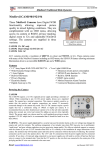


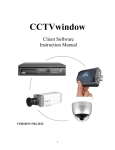

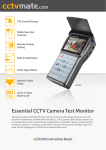

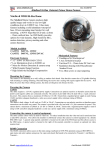
![Manual de Instalación TOffice [PDF - 220k]](http://vs1.manualzilla.com/store/data/006216131_1-164d3ae6423ca1db9e4ee435ed7a390c-150x150.png)